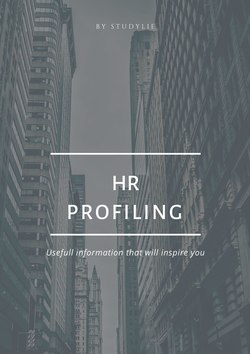Читать книгу HR Profiling - BY STUDYLIE - Страница 5
CHAPTER 3
WHAT IS THE BASIS OF THE PERSONNEL PROFILING MODEL OF THE INTERNATIONAL ACADEMY OF LIE RESEARCH (IALR)?
ОглавлениеWhen recruiting staff a large number of details should be taken into account, from the position’s profile to the analysis of the psychological characteristics of the candidate.
Fortunately, there is a tool that allows to optimize the time without wasting it on communicating with unsuitable candidates. This is a preliminary stage, which includes evaluation, filter, analysis of resumes and questionnaires, both incoming and the ones that you yourself are looking for, for example, on hh.ru, superjob.ru, etc.
In the fourth chapter we will analyze in detail how to act at this stage. But before proceeding to the appropriate section of the book, we will show what our personnel profiling model is based on.
So, the IALR personnel profiling model consists of six points:
1) Operational psychodiagnostics of IALR.
There are quire a few classifications that help typologize a person, from dividing all people into four temperaments to the signs of the zodiac.
We distinguish 8 psycho-types, taking into account the peculiarities of the nervous system and basic emotions. We will talk about this from two points of view: which candidate is effective in a particular psycho-type of a particular position and which risk factors are peculiar to him. Risk factors can be predicted and thus the potential of their occurrence can be reduced. We will also look at the criminal profiles of people to understand what the candidate is capable of within the organization.
It is impossible to repair the whole house using only one hammer, since any classification has its limitations. One classification might not be useful for all tasks, besides sometimes it might not be applied at all. Therefore, we also rely on the human metaprogram profile.
2) Metaprogram profile (MP-profile).
The MP profile is a fairly stable characteristic, but still changing throughout life. It is something that we can develop and «stretch». And in the «stretched» metaprogram profile, we can work in opposite contexts equally productively. Understanding a metaprogram profile gives us many advantages. We start with finding out what is the basis for making decisions of a certain person, what motivates him, how he will interact in a team and with other people. By the end we know which positions are best for appointing the candidate. Besides, knowing the metaprogram profile allows to «measure» risk appetite and the level of loyalty of a person.
3) Projective techniques.
It is such a simple and powerful tool, that it allows to save a lot of time, which is spent on identifying real motives, motivators and personal characteristics. If not to use projective methods, then at the first meeting with the candidate we will hear socially acceptable and socially expected answers. In other words, people will try to look good in your eyes, and for a number of questions will give answers that are not entirely truthful. With the help of projective methods we instigate the person to respond unconsciously, based on the characteristics of his personality and experience. With some methods you are most likely familiar, for example, with the technique of Svetlana Ivanova. In this book we will touch these methods. We have also included a number of questions that are not related to the works of this author.
4) NLP tools.
Of course, we can’t do without NLP! In personnel work we use NLP tools when we set (attitudes) installations; when we examine who the person is and what are his representative systems to perceive the world. Here we also include a pyramid of logical levels, thanks to which we will be able to describe the employee’s loyalty level. Any communication is a manipulation, and in order to get answers to our questions we must act professionally and take responsibility for it.
5) Information collection techniques.
An important component in the personnel profiling model is information collection techniques. We apply these techniques not only in relation to people who are being recruited for a particular position, but also in relation to our potential partners in order to understand who we will work with.
It happens that the position you invite a person for is quite important. The decisions of the person on this position might influence the overall development strategy of the company (for example, in the position of a top manager). To understand what kind of person he is, what dark sides and pitfalls he has, whether he has any contacts with competitors, whether there are court decisions and other unpleasant hidden facts, we need to use additional information gathering tools. We use open information resources, databases, and social networking sites. Using this tool, we might, so to say, play softball «spy games». And before we see the candidate, we already know something about him.
6) Methods of non-instrumental (toolless) lie detection.
Think of the answers that candidates gave on he question «Why did you choose our company?» From this point on, «sugar honey» would begin: «Because your company is the best,» «Because I want to work with professionals,» «Because you are the largest suppliers in the market,» etc. Now imagine what can actually be hidden behind these words and what are this person’s true motives and reasons for employment. «I have to wait a couple of months, and then I will definitely go to another organization, they offer higher salary and tastier food …”, or «Well, it’s near my house». Or the worst case: «It is because I’ve agreed with your competitors that I would be feeding them intel.» During the interview at least 20% (which is the very minimum!) of the information will not be true.
To analyze the answers to a number of important questions (including reasons of dismissal from previous jobs or harmful addictions), tools for assessing the reliability of information are needed.
